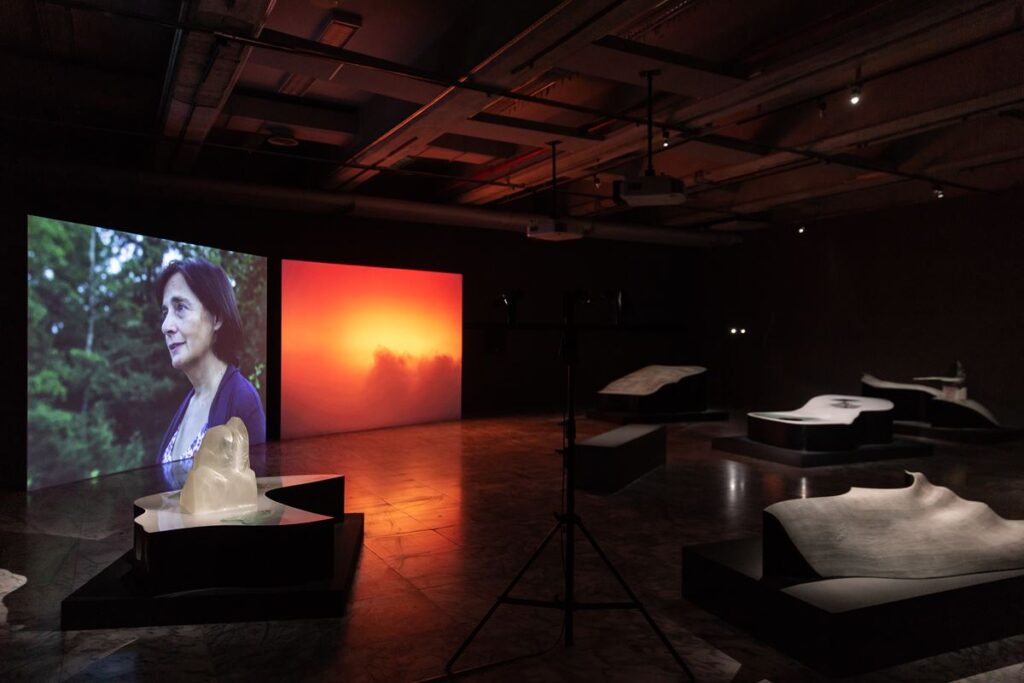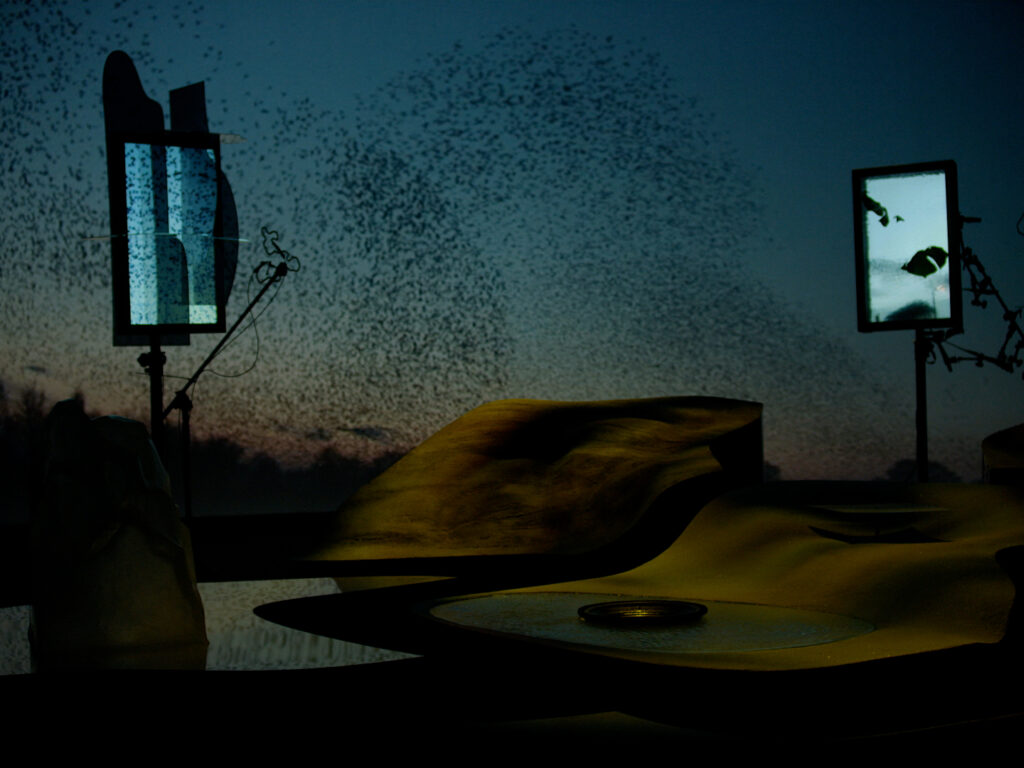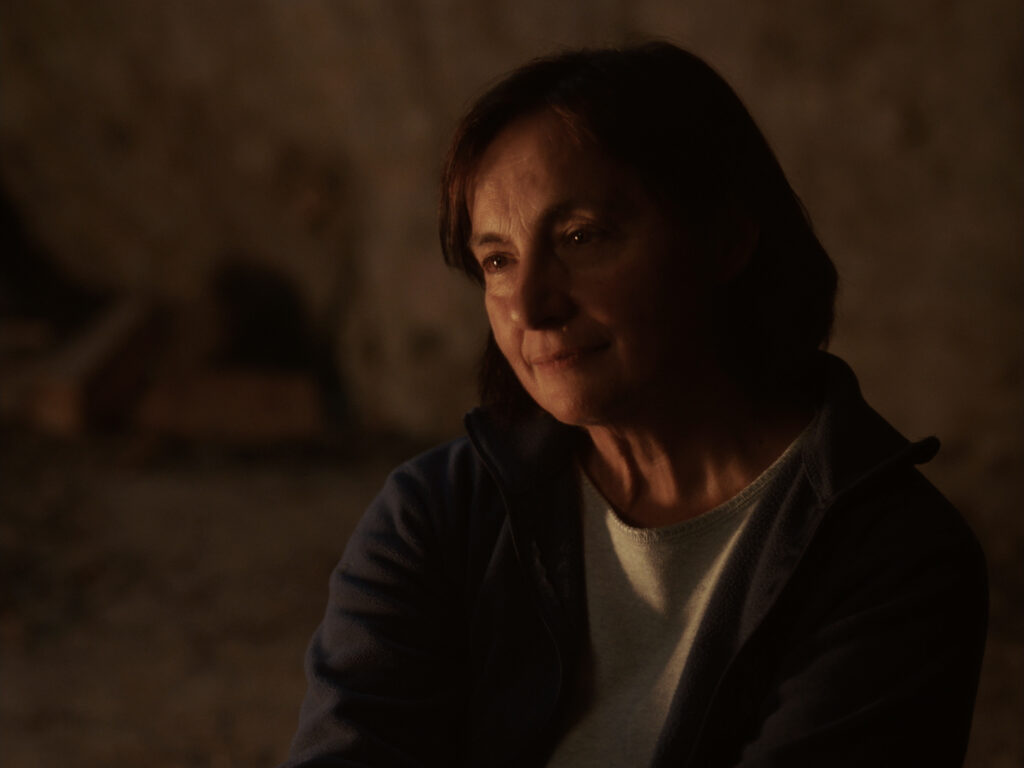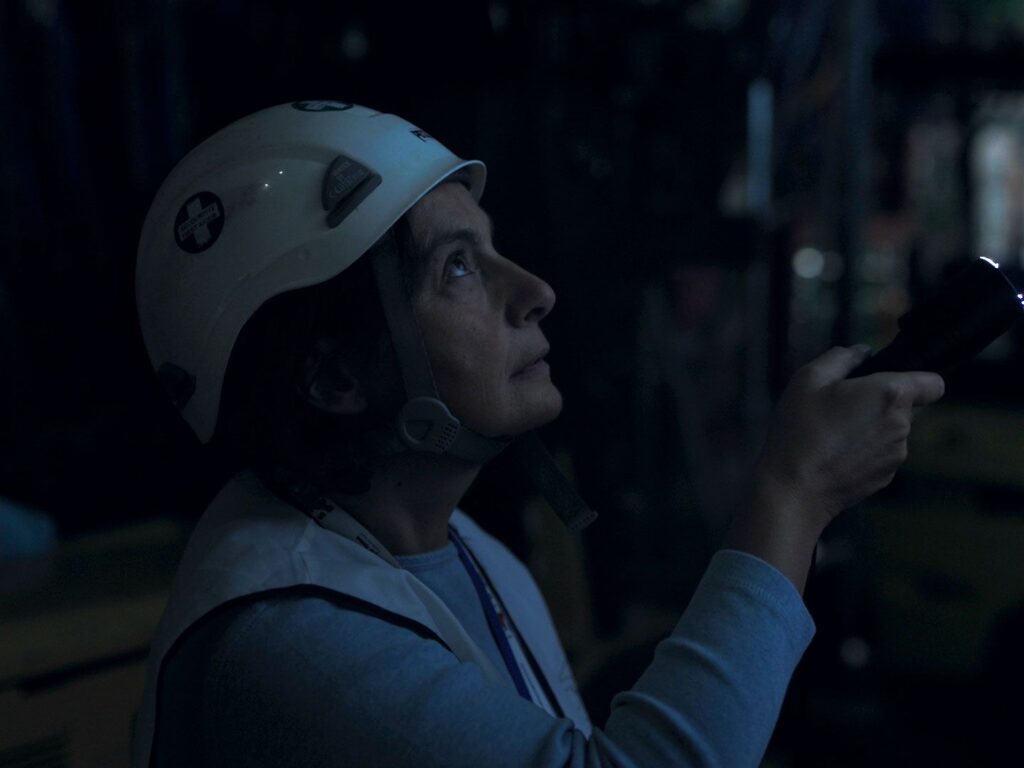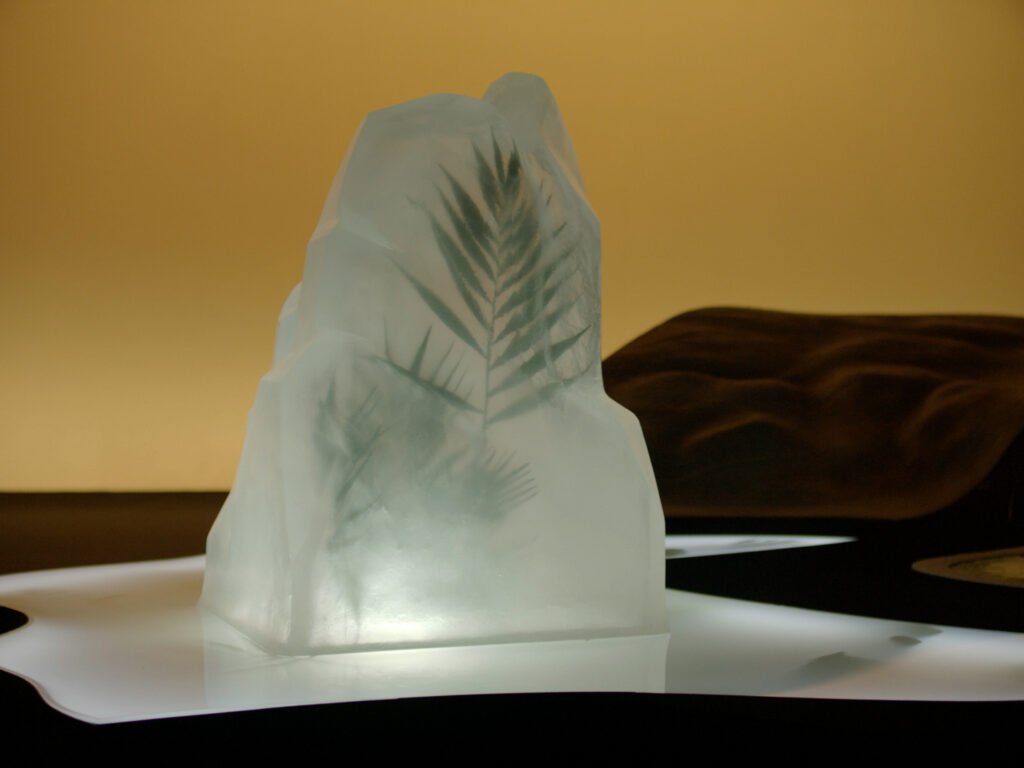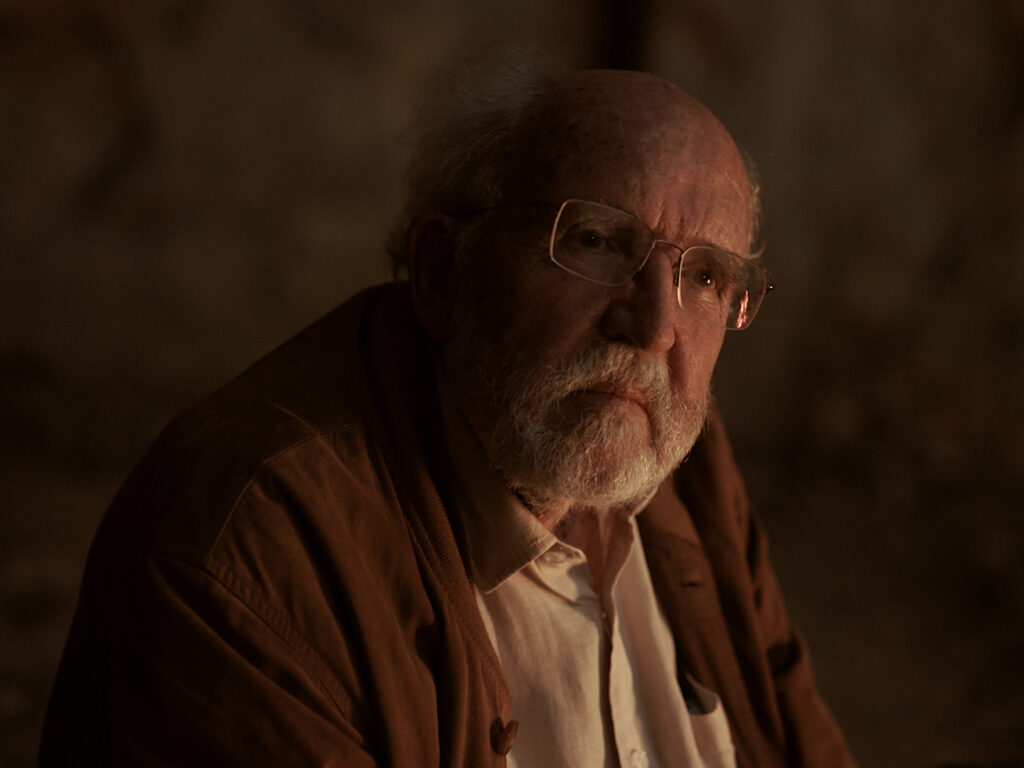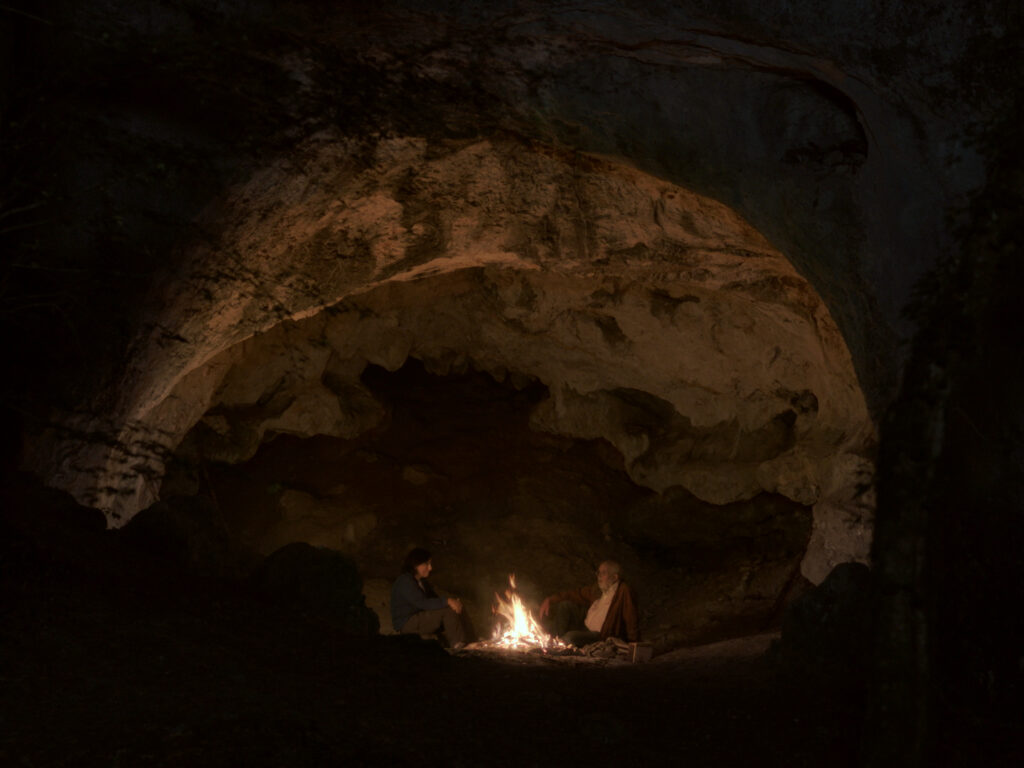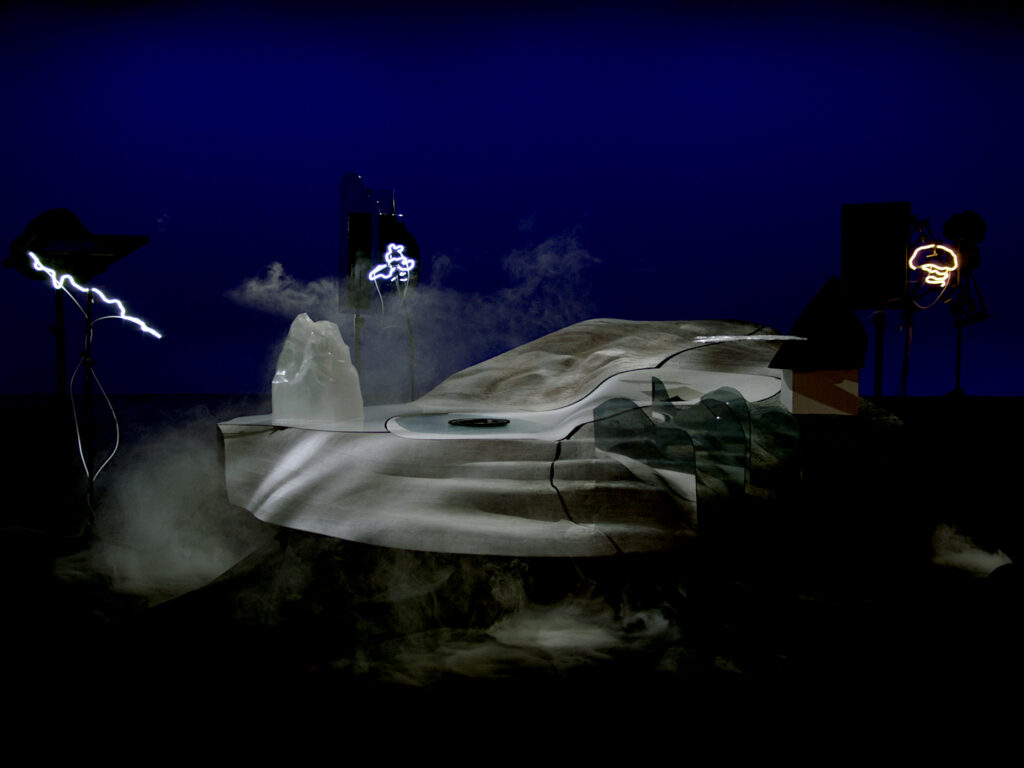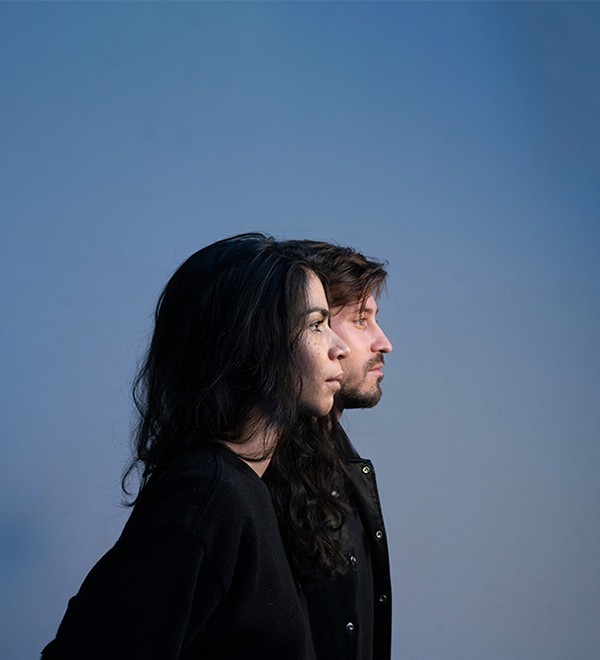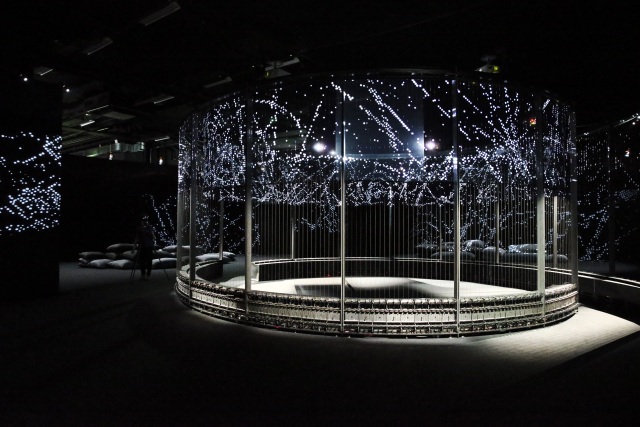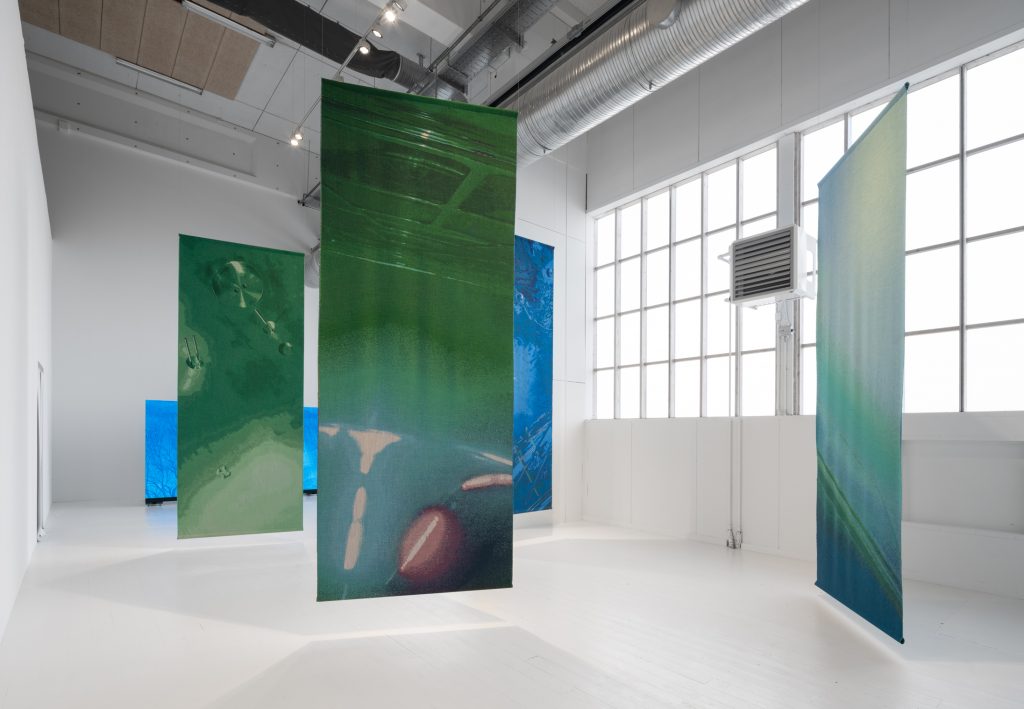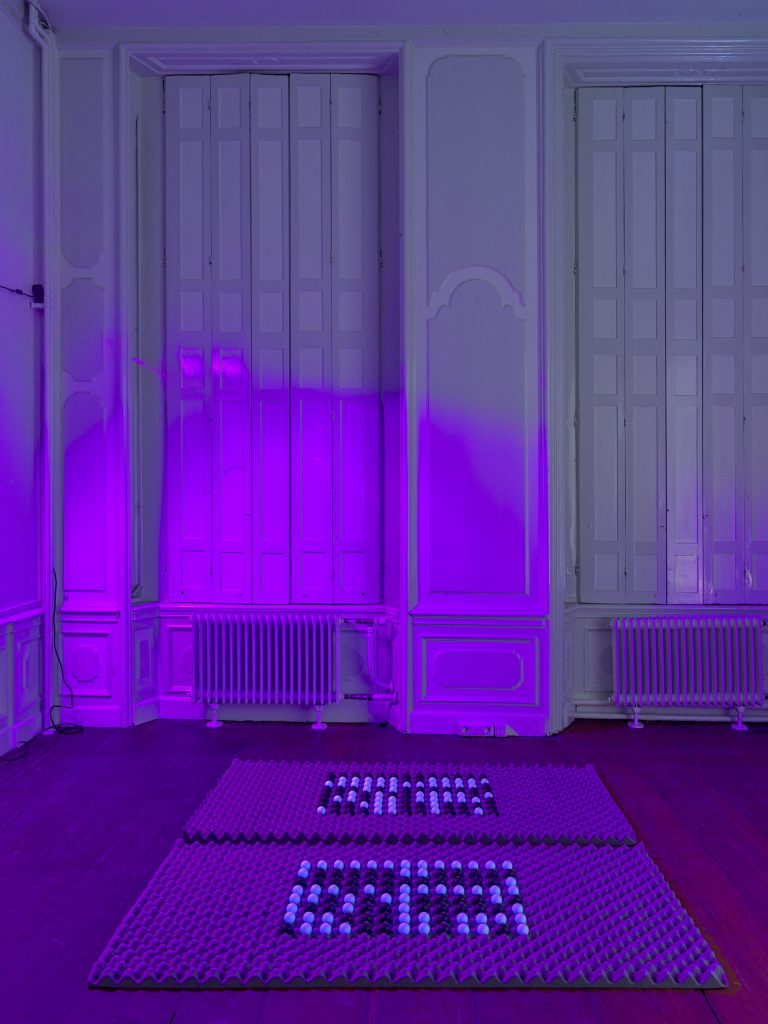- Year
- 2020
- Medium
- Two-channel video installation, 17"
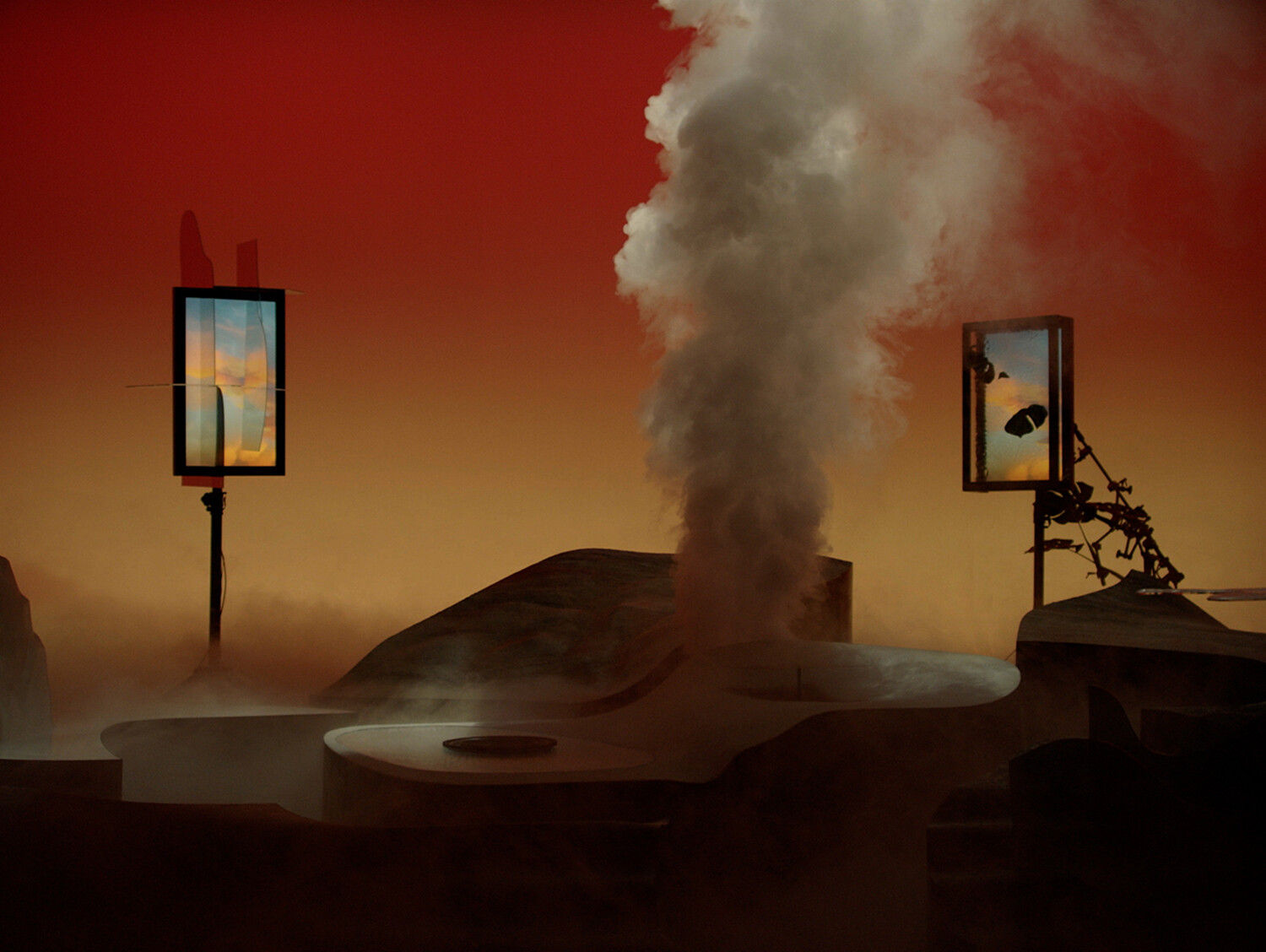
In a fictional world, physicists Chiara Mariotti and Michel Mayor speculate about the notion of the void, one of the current debates in physics, which would link humankind and nature
Mass brings a narrative film and sculptural installation into dialogue, unfolding between reality and science fiction, conjuring a theatrical set. The concept of Æther, once the foundation of many creation myths, resonates with current debates about the nature of the void—one of the great unsolved mysteries in contemporary science. Particle physics sees the void as a quantum vacuum filled with fluctuating energy, while astrophysics studies cosmic voids as vast, low-density regions in the universe. Both fields seek a unified understanding that challenges classical notions of emptiness.
In the narrative film, June Balthazard and Pierre Pauze cast renowned scientists in their actual roles: CERN particle physicist Chiara Mariotti (EPS Emmy Noether Laureate 2018) and astrophysicist and 2019 Nobel-prize winning astrophysicist Michel Mayor. The story is set in an speculative world where a long-predicted ecological disaster has come to pass, with the protagonists transversing across CERN’s underground experiments and primordial caves.
Humanity, plunged into an endless night, faces an unprecedented crisis. As they await a new dawn, the scientists engage in a profound conversation about their contrasting views on the void. The extended night leads them to existential questioning. They speculate about a vibratory substance that, according to both ancient beliefs and contemporary science, may connect humanity and nature.
The film is in conversation with an installation that embodies this mysterious substance. The sculpture becomes a ’cosmos’ where the protagonists seem to live, staging elements of nature and fragments of otherwordly planets. Balthazard and Pauze approached the sculpture as a microcosm or laboratory, filming it in an empirical way. Machines embedded inside the sculpture animate matter through vibrations, giving tangible form to the vibratory substance.
The two films, presented side by side, create a co-presence between the scientists searching for this elusive substance and the substance itself, which seems to take shape. The inactive sculpture, displayed like an archaeological relic, serves as a trace of a lost world.
